Cannula Introducer Needles vs Cannula Guides for Fillers
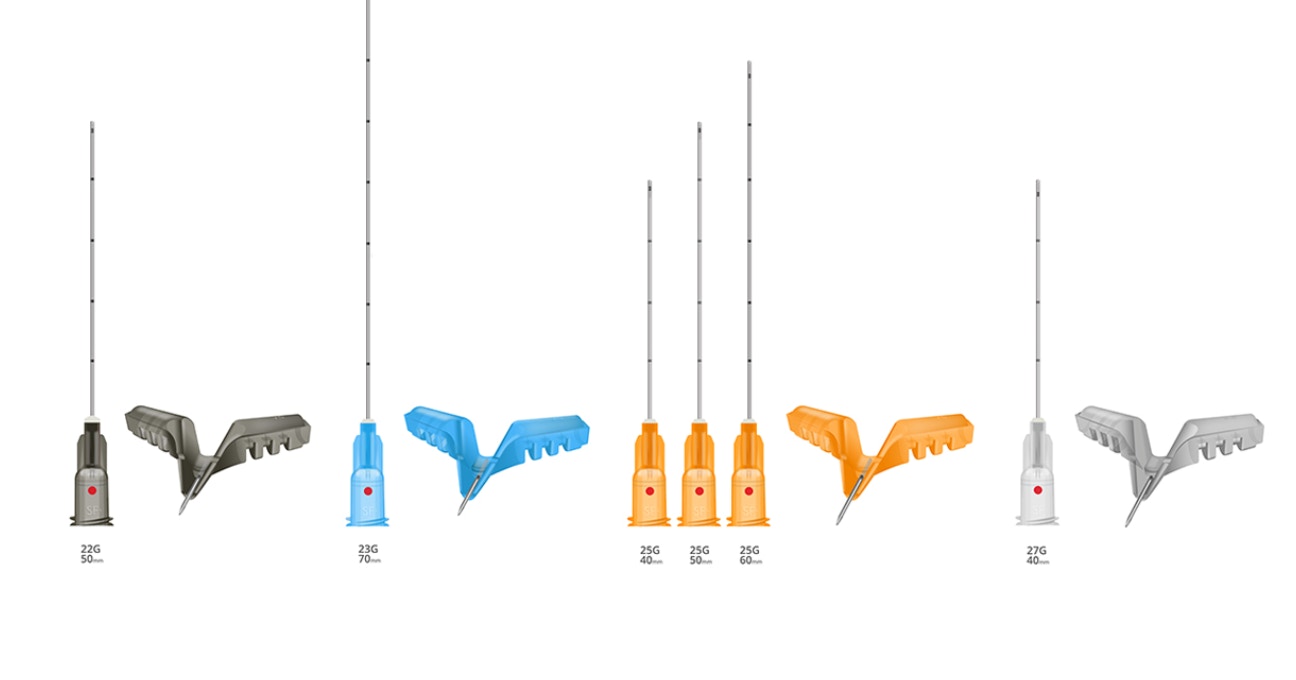
Let’s explore using a cannula introducer needle versus a guide to insert your cannula when injecting filler.
Cannulas are useful for delivering your desired product past the skin barrier. We know that they offer enhanced safety and patient comfort. But how do you introduce your blunt-tipped cannula into the skin? There are a couple of options…
Cannula introducer needles are the most common approach for fillers and skin boosters. The other option is a specially designed guide.
Clinical trainer, Dr Karla Orsine Murta Dias, who successfully completed her Level 7 Diploma in injectables at Harley Academy, shares her expertise on this topic.
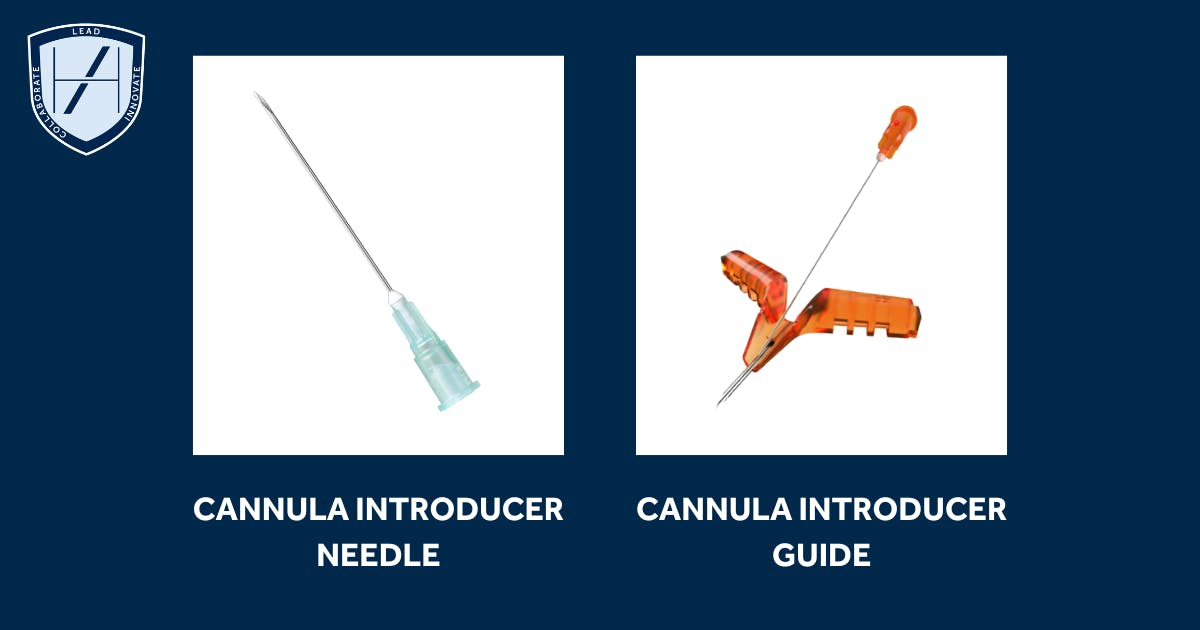
What’s the difference between a cannula introducer needle and a cannula guide?
A cannula introducer needle is simply a large needle used to pierce the skin, creating an entry port for your smaller gauge cannula.
Dr Karla explains the alternative device: “A cannula guide is an instrument designed to further assist medical practitioners when using a cannula for injections.
“It typically consists of a needle with a specialised attachment that helps to guide the cannula accurately into the desired entry point.”
Confusingly, cannula guides are also sometimes known as cannula introducers and vice versa. However, guides are distinct from cannula introducer needles. Below you can see examples of what each tool looks like to help illustrate their differences.
Potential benefits of using a cannula guide device over a cannula introducer needle
Not all aesthetics practitioners use a cannula guide; you’ll find the majority of aesthetic practitioners use an introducer needle. However, there are some theoretical benefits to using this small device.
Dr Karla highlights, “Incorporating a needle guide into medical aesthetic procedures can contribute to more effective treatments with improved patient satisfaction.”
1. Precision
“A guide can help with precise cannula placement, enhancing accuracy in delivering the cannula to the desired point.”
2. Improved control
“Using an introducer guide can allow for better control over the direction of the cannula.”
Essentially, both tools - introducers or guides - are designed to create a port of entry for your cannula. Therefore, whichever one you choose - as long as it’s doing its job of creating the entry porthole for the cannula - is fine.
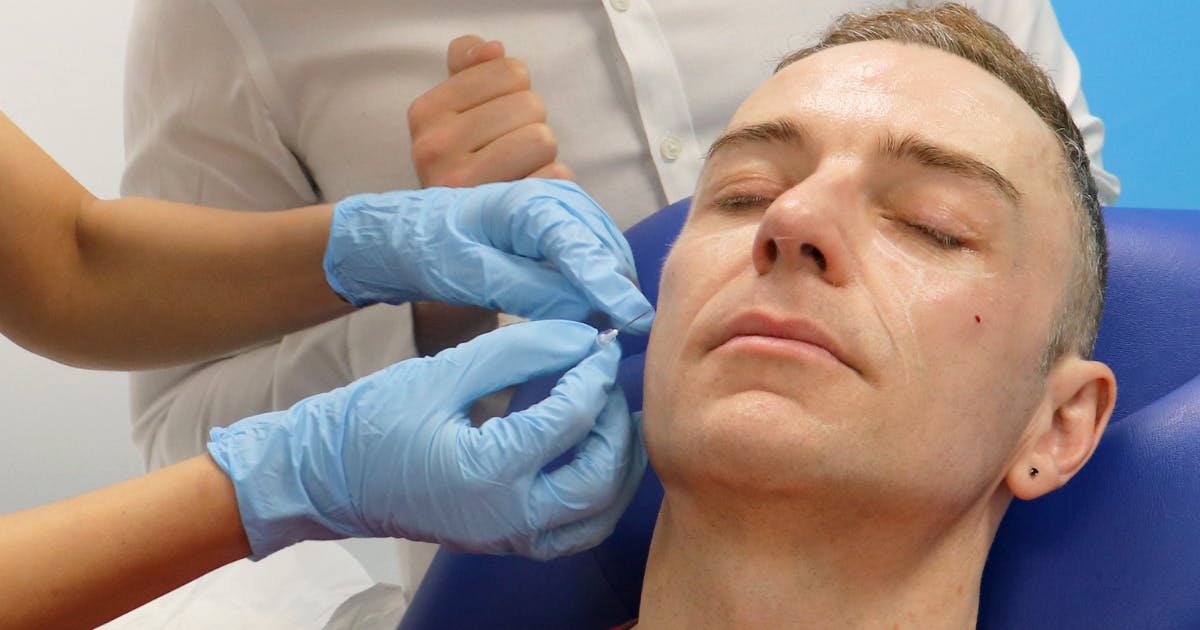
Which aesthetic treatments require a cannula introducer needle?
If you’re using a cannula to administer your treatment, you’ll need something to first pierce the skin. As such, a cannula introducer is required in each instance due to the cannula’s blunt tip.
“Cannula introducer needles or guides can be employed during filler injections, depending on practitioner preference,” says Dr Karla.
Filler treatments which commonly involve cannula use
Whether you opt for an introducer device or a regular cannula introducer needle, here Dr Karla outlines some treatments where cannulas are generally used. This cannula use is to promote safer, more exact placement and smooth filler distribution.
- Cheek filler
- Jaw filler
- Lip filler
- Tear trough filler
- Nasolabial fold filler
- Marionette line filler
- Temple filler.
How and when to use a cannula is something you’ll learn during our Level 7 Diploma in Botox & Dermal Fillers course. This Ofqual-regulated, postgraduate level injectables course promises comprehensive aesthetics training. Not only will you learn to use a needle, cannula and an introducer needle for fillers - you’ll get botox training, too.
Cannula competency is a notable eligibility requirement for our Injectables Masterclasses, as you’ll be delving deeper into specific techniques.
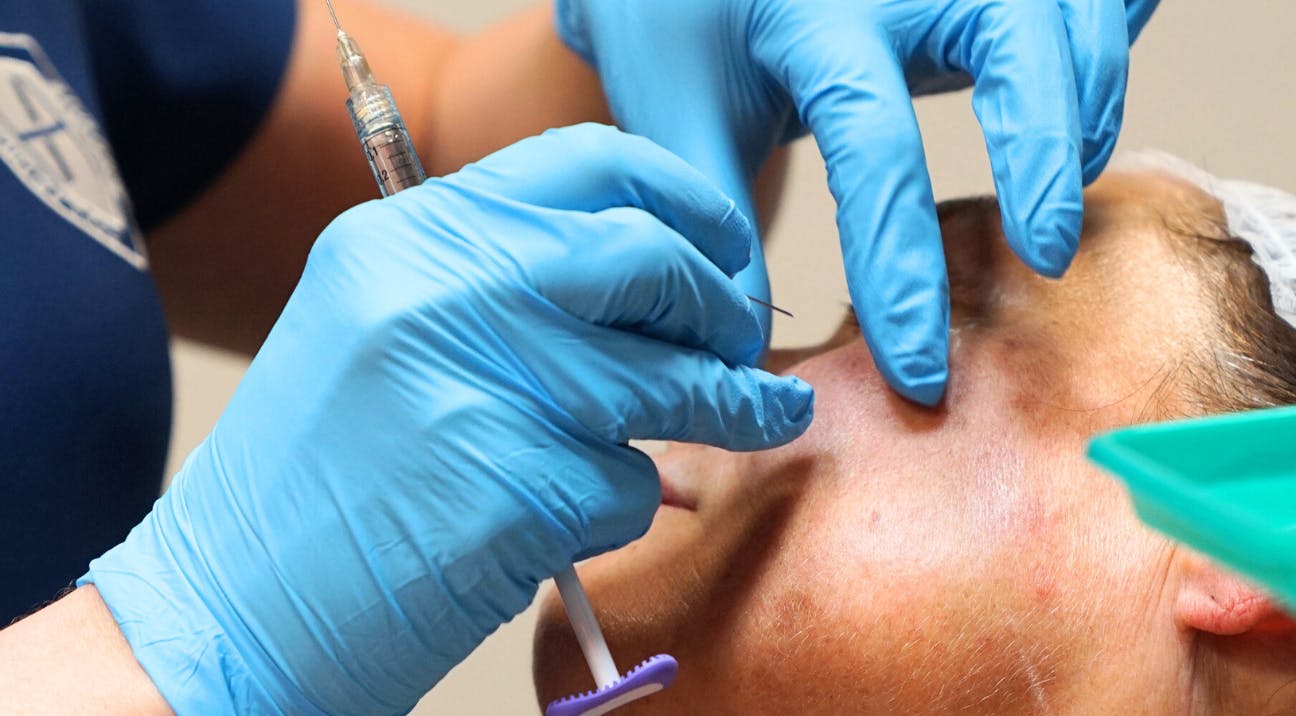
Why should you use a cannula when administering fillers?
Dr Karla believes, “Cannulas are advantageous in various scenarios within medical aesthetics. This is especially the case where controlled injection techniques are essential. Obviously this is in addition to the desired aesthetic outcome. Here are some scenarios where their uses are highlighted…”
Complex facial anatomy
“In areas with intricate anatomical structures, such as around the eyes or lips, cannulas offer a reliable pathway for injections. This helps to reduce the risk of accidental vessel puncture or tissue trauma, especially in delicate regions."
Minimising bruising and swelling
“In patients prone to post-injection reactions or those undergoing multiple treatments in a single session, using a cannula can help to minimise bruising and swelling.
“Controlled insertion facilitated by a cannula introducer needle or guide helps preserve tissue integrity and minimise adverse events.”
Reducing patient discomfort
“For patients sensitive to pain or discomfort during injections, cannulas can offer a softer, more comfortable experience compared to traditional needles. The insertion of the cannula minimises tissue trauma and nerve stimulation. This can enhance patient comfort compared to needle filler deposition techniques.”
This is a great point as a comfortable patient is a happy patient - and happy patients not only return. They frequently become loyal clients who recommend you to their friends!
Enhanced precision in targeting specific areas
“When targeting specific facial structures or depths, such as subdermal or supraperiosteal layers, cannulas assist in precise placement of products. This is particularly beneficial in procedures requiring volumetric enhancement or structural support, such as cheek augmentation or chin sculpting.”
Mitigating complications in high-risk areas
“In regions with a higher risk of adverse events, such as the nasolabial folds, cannula use can help to mitigate risks by providing a considerate route for injections.
“The controlled insertion facilitated by a cannula helps reduce trauma to surrounding tissues, including blood vessels, nerves and muscles.
“By avoiding critical vascular structures, the risk of complications such as necrosis and vascular events are minimised. It lowers the likelihood of side effects and adverse events commonly associated with injectables, promoting a safer and more comfortable patient experience.”
Optimising outcomes with advanced techniques
“Cannulas facilitate most filler injection techniques helping you to achieve optimal aesthetic outcomes. These include threading, fanning, and cross-hatching. These filler injection techniques require control over cannula placement and trajectory, which is effectively facilitated by the introducer needle or guide.”
In summary, cannulas excel in scenarios where precision, safety and patient comfort are paramount. They’re a valuable tool for injectors seeking to optimise their techniques and deliver superior aesthetic results. And, whenever you’re using a cannula, you’ll also need to use a cannula introducer needle or guide, to place your cannula correctly.
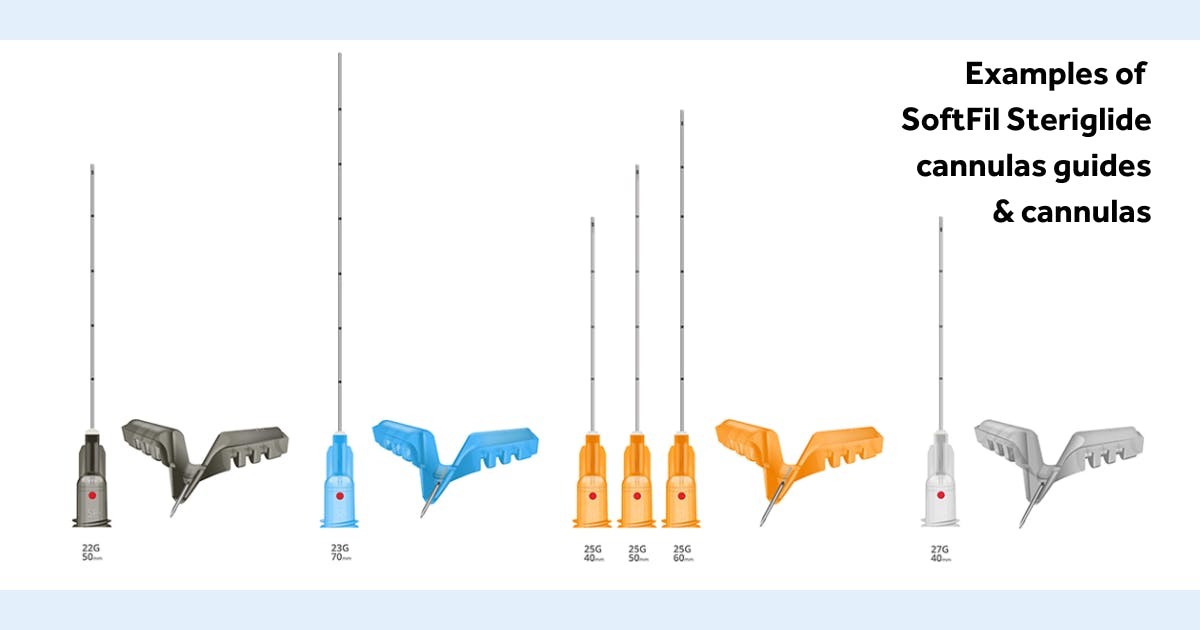
Using a cannula introducer needle or guide device as a new aesthetics practitioner
Cannula guide devices, which allow you a smooth route through skin for placing your cannula, can be an alternative to straightforward introducer needles. They can be used by aesthetic practitioners of all experience levels. However, both tools do very similar job. Which tool you use to introduce your cannula to the correct layer is entirely down to your personal preference.
Dr Karla uses both guides and introducer needles. Specifically talking about cannula guides, she enthuses: “They’re a great learning tool, promote consistency and facilitate more accurate injection techniques.”
Expanding further, she explains why you may want to consider using a cannula guide rather than an introducer needle:
Training aid for a new injector
“For new injectors still developing their skills and techniques, a cannula guide can serve as a valuable training aid. It provides a visual and tactile reference point, helping you learn insertion angles, depths and techniques with greater accuracy and confidence.”
Consistency for experienced aesthetics practitioners
“Even for experienced injectors, using a cannula guide can contribute to maintaining consistency in your injections. It helps ensure that each treatment is performed with precision and reproducibility, maintaining consistent results.”
Complex areas and advanced techniques
“A cannula introducer can be partially useful in certain complex treatment areas. It can also be valuable when delivering advanced injection techniques such as deep structural or multi-planar injections. The needle guide assists in navigating challenging anatomical structures safely and effectively, regardless of experience level.”
Does using a cannula guide make you a safer aesthetics practitioner?
It’s worth noting that it’s the use of a cannula, rather than the introducer needle or guide, that’s aligned with safer techniques.
- Reducing the risk of complications
- Enhancing precision and consistency
- Promoting patient comfort
- Contributing to safer and more successful results.
Incorporating a cannula guide into your injectable treatments can, however, expand your medical aesthetics technique toolkit. Some people enjoy using these little devices, whilst others find them trickier than the traditional needle introducer.
Dr Karla feels, “For less experienced practitioners, introducer guides are a valuable learning tool. They can help you develop proper injection techniques and spatial awareness.
“This comprehension and practical implementation of proper techniques supports ongoing professional development. Furthermore, it contributes to safer and more effective aesthetic practice over time.”
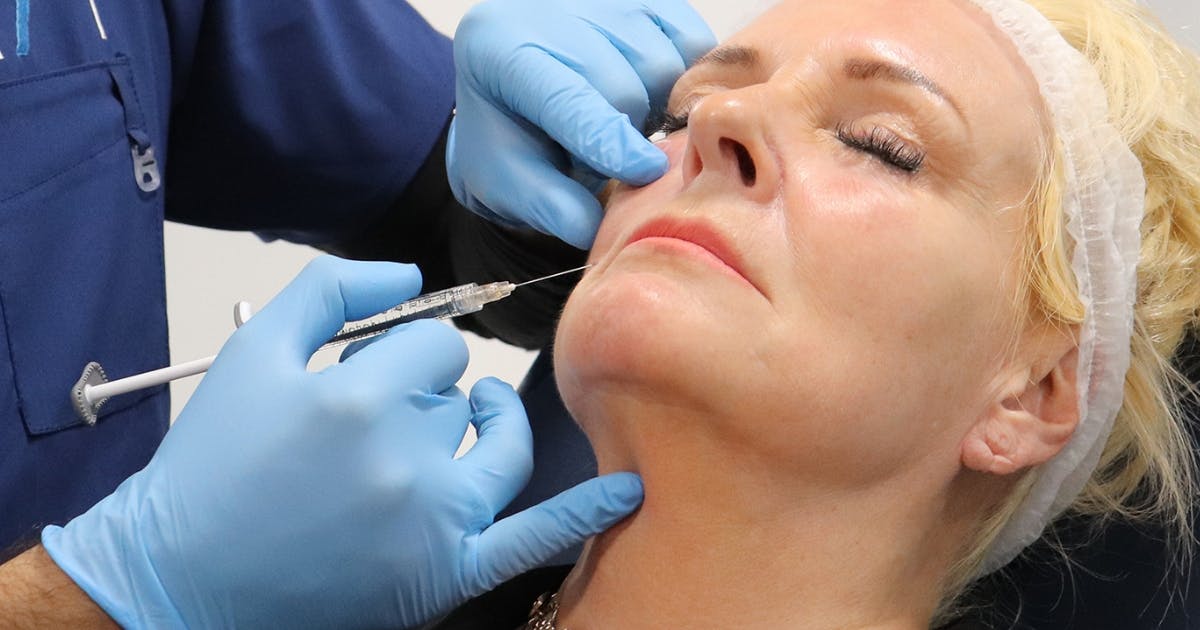
Pros and cons of cannula introducer guides
As we’ve said here, whether or not you decide to use cannula introducer guides - rather than needles - is entirely up to you.
Here are some of the general pros and cons of these guides.
Pros:
- Can help you to place your cannula accurately
- May provide enhanced control over the direction of your cannula placement
- Great for people who love a gadget!
Cons:
- May feel too cumbersome compared to an introducer needle
- More manual dexterity may be required to use effectively
- Additional plastic waste.
Which do you prefer to use?
Why not try a cannula guide and decide how you feel? Let us know how you get on - we’d love to hear your views!
We hope this guide has been helpful. If you have any additional questions, just drop us a message via the chatbot in the bottom right of this screen. Alternatively, you can message us or leave a comment via our Instagram account @Harley_Academy.
All information correct at the time of publication
Download our full prospectus
Browse all our injectables, dermal fillers and cosmetic dermatology courses in one document
By submitting this form, you agree to receive marketing about our products, events, promotions and exclusive content. Consent is not a condition of purchase, and no purchase is necessary. Message frequency varies. View our Privacy Policy and Terms & Conditions
Attend our FREE open evening
If you're not sure which course is right for you, let us help
Join us online or in-person at our free open evening to learn more
Our Partners














STAY INFORMED
Sign up to receive industry news, careers advice, special offers and information on Harley Academy courses and services

